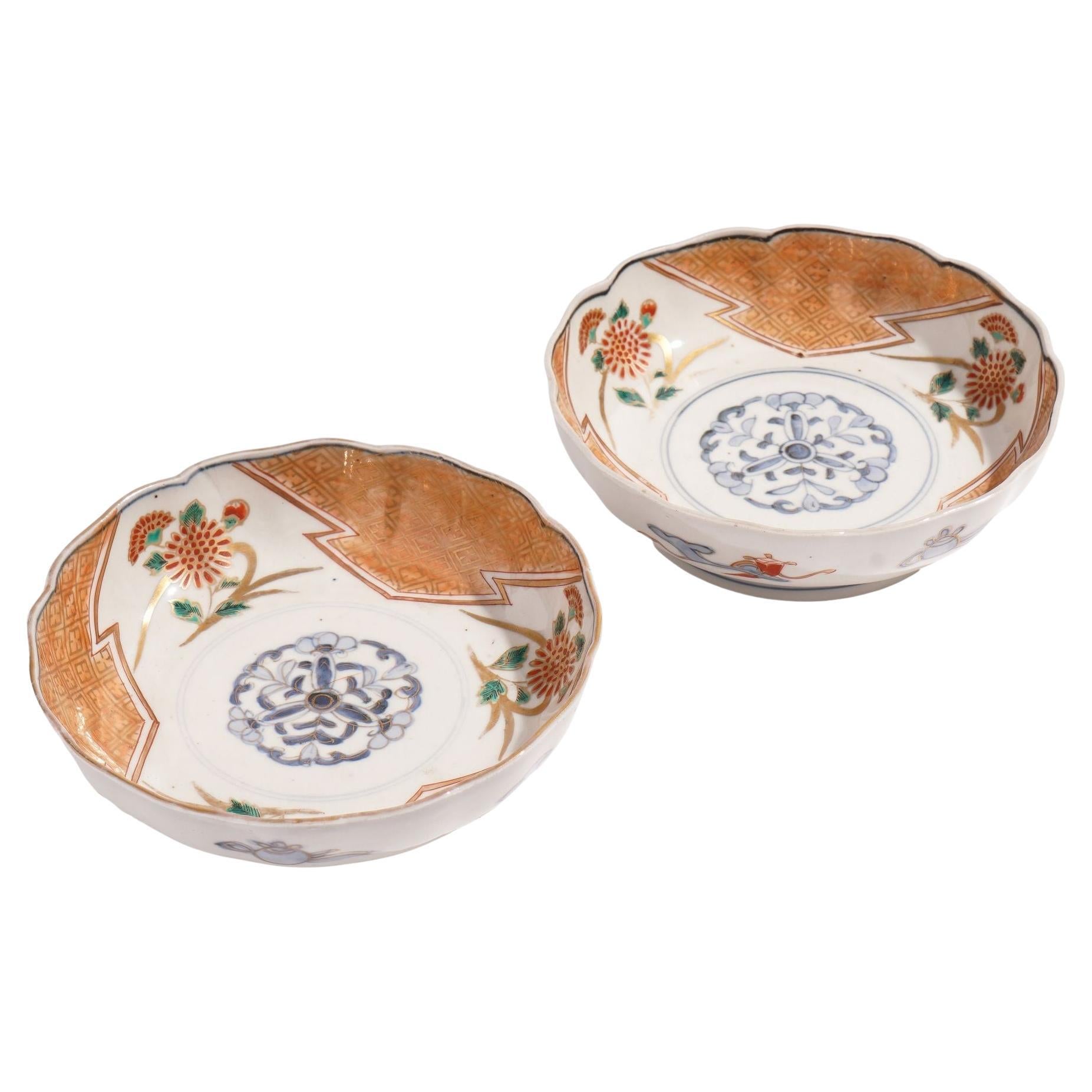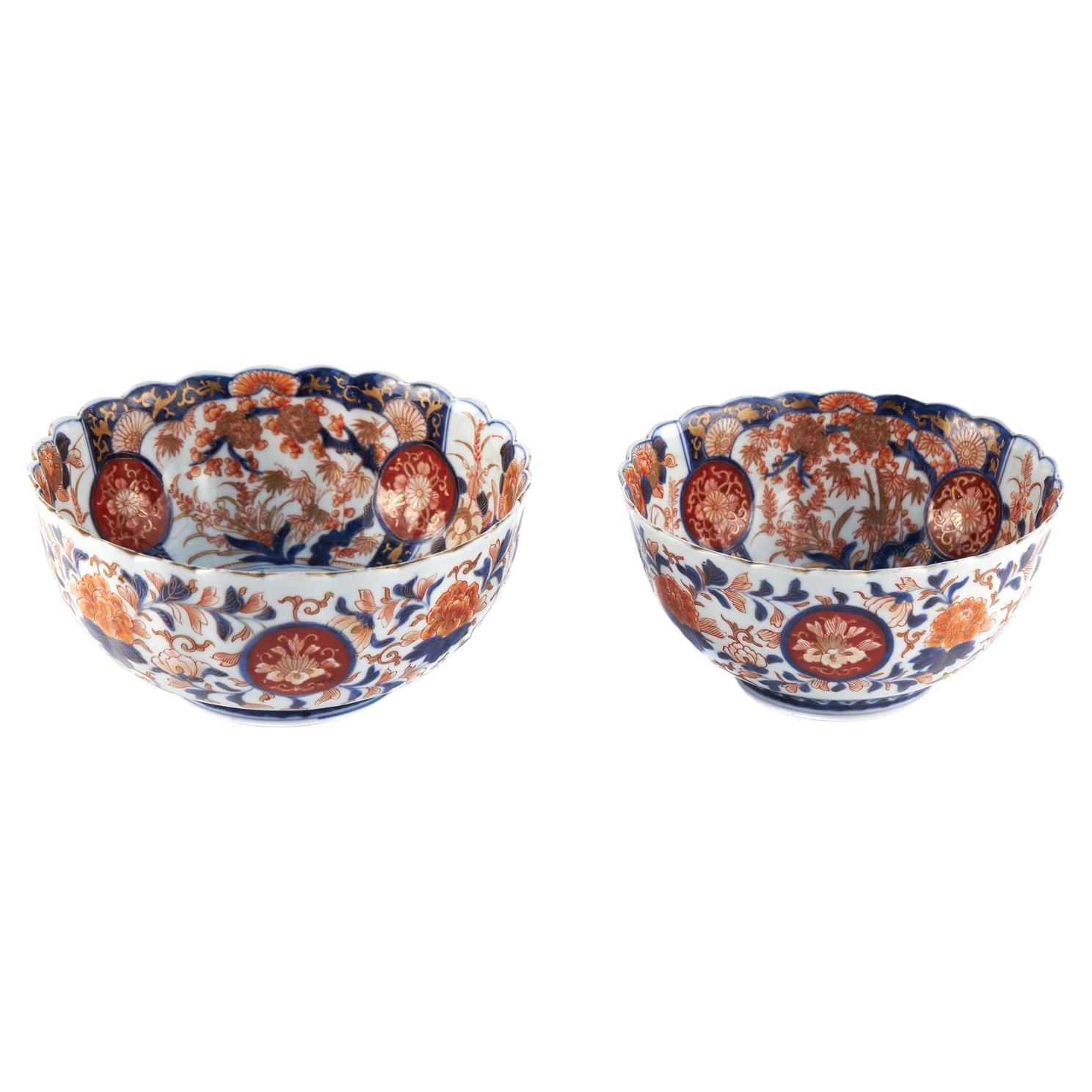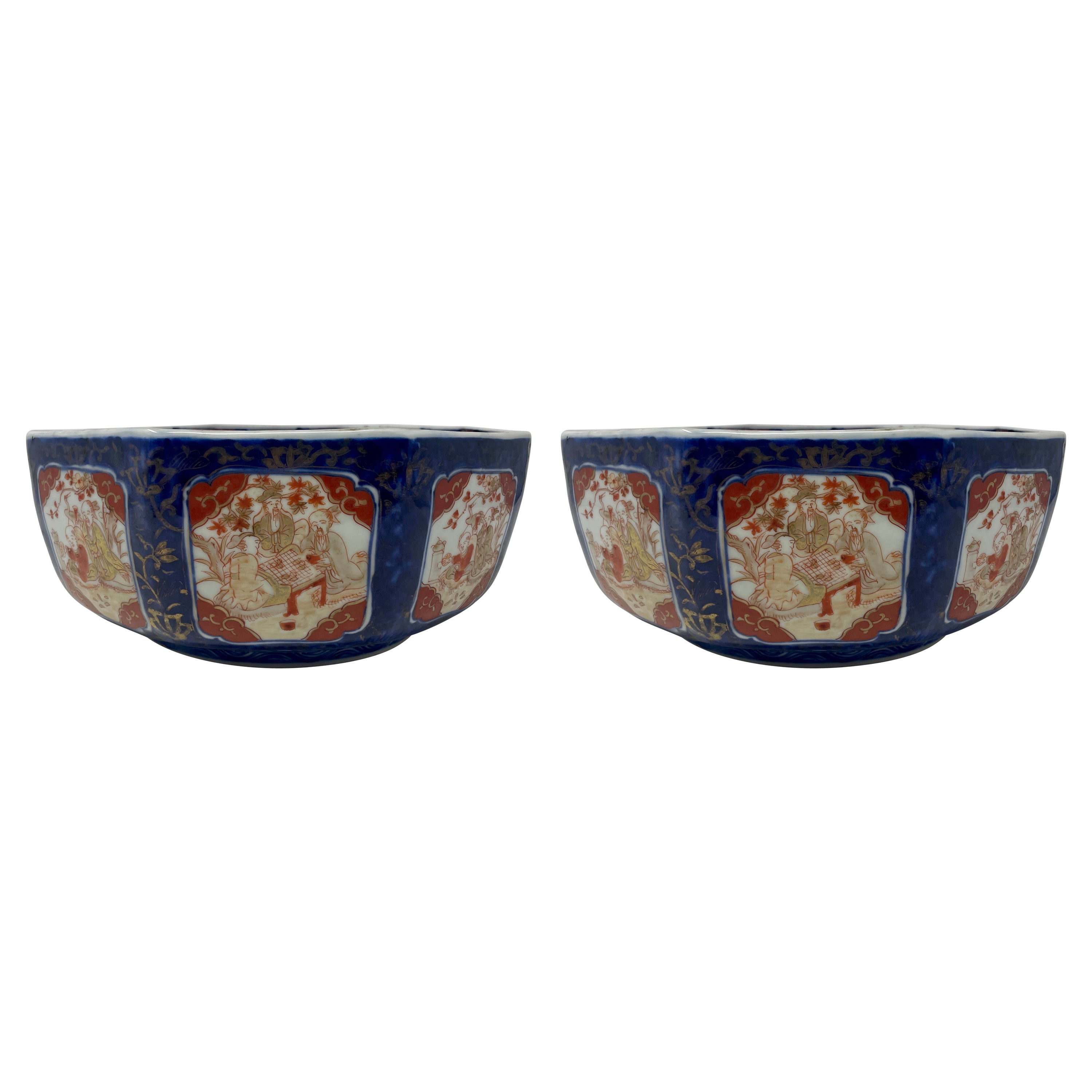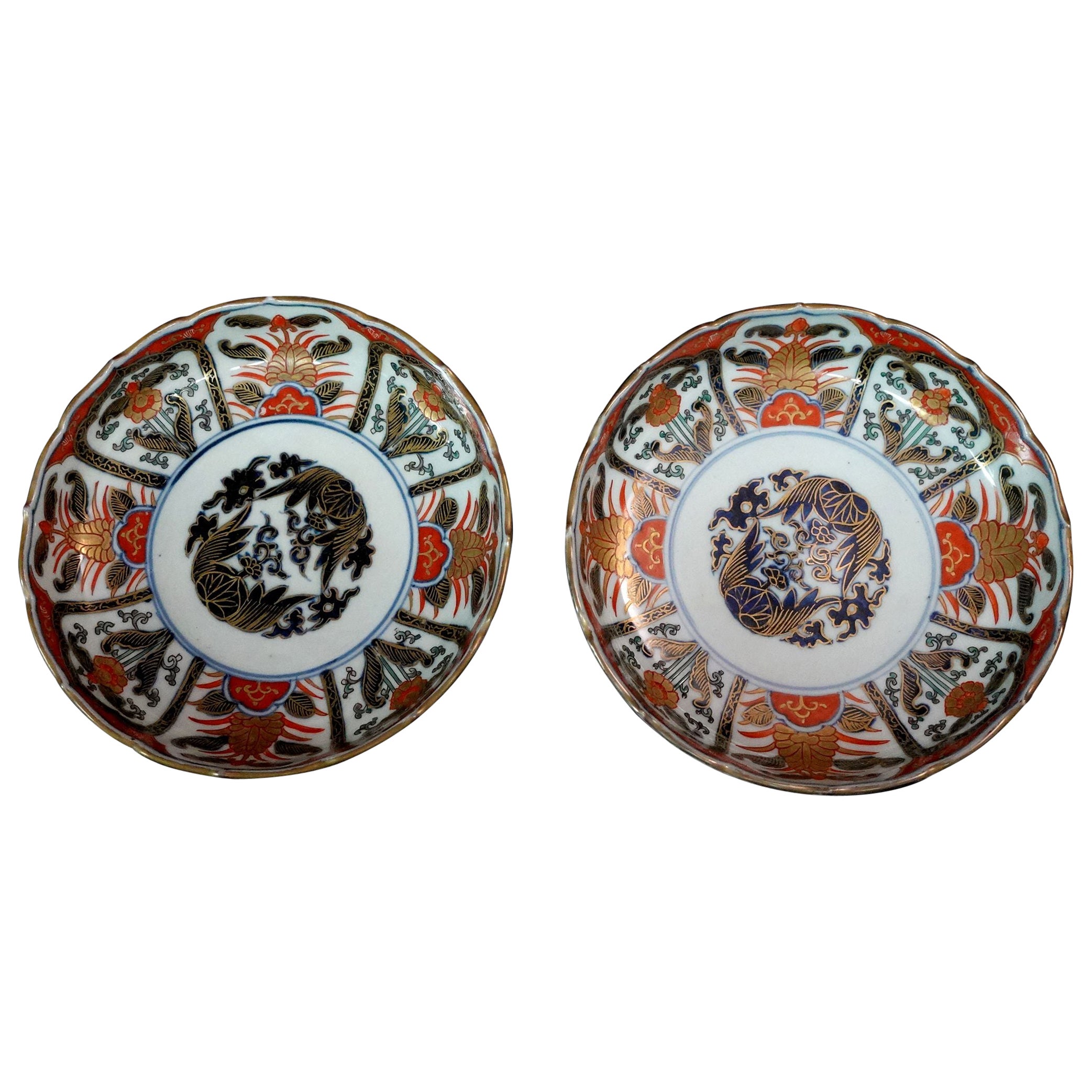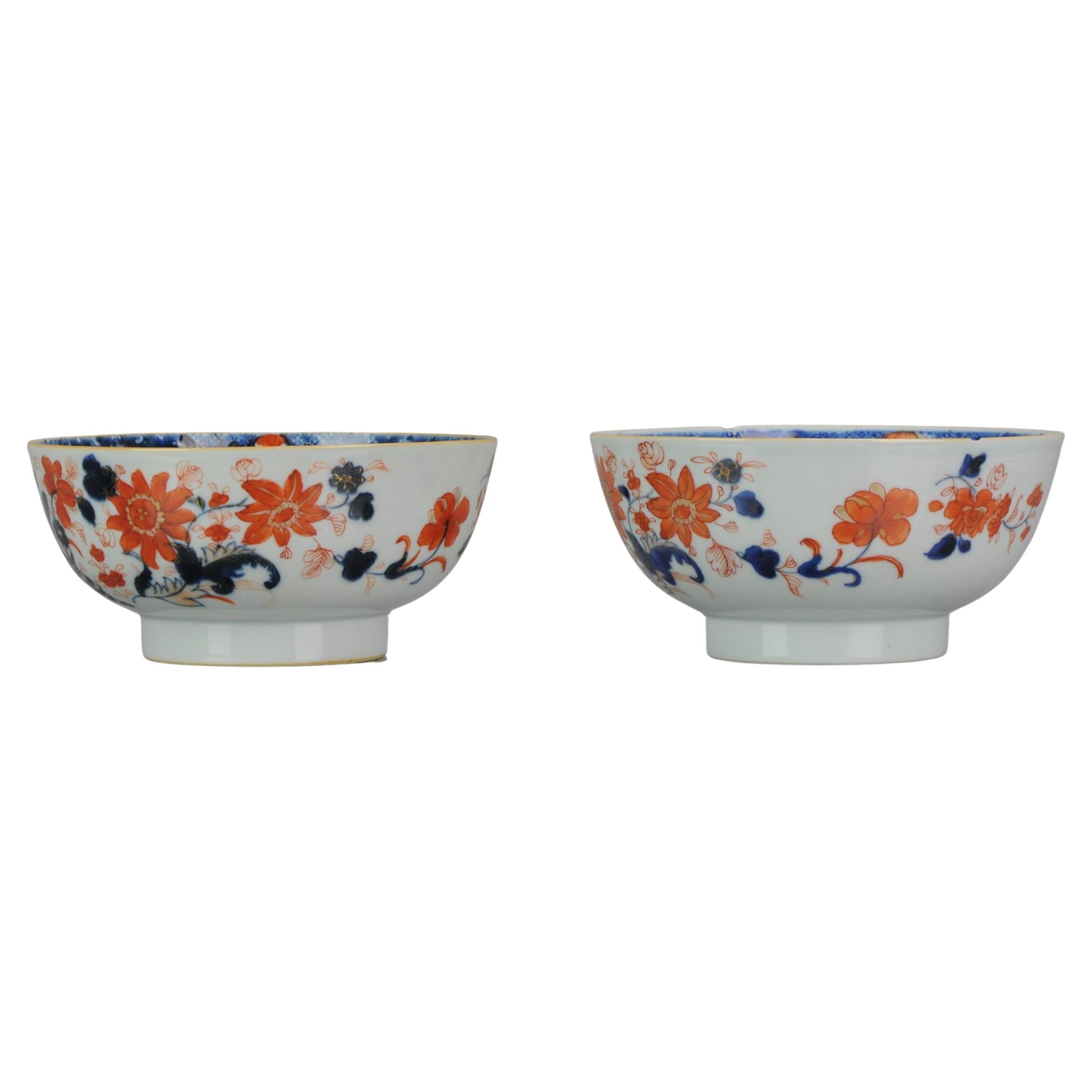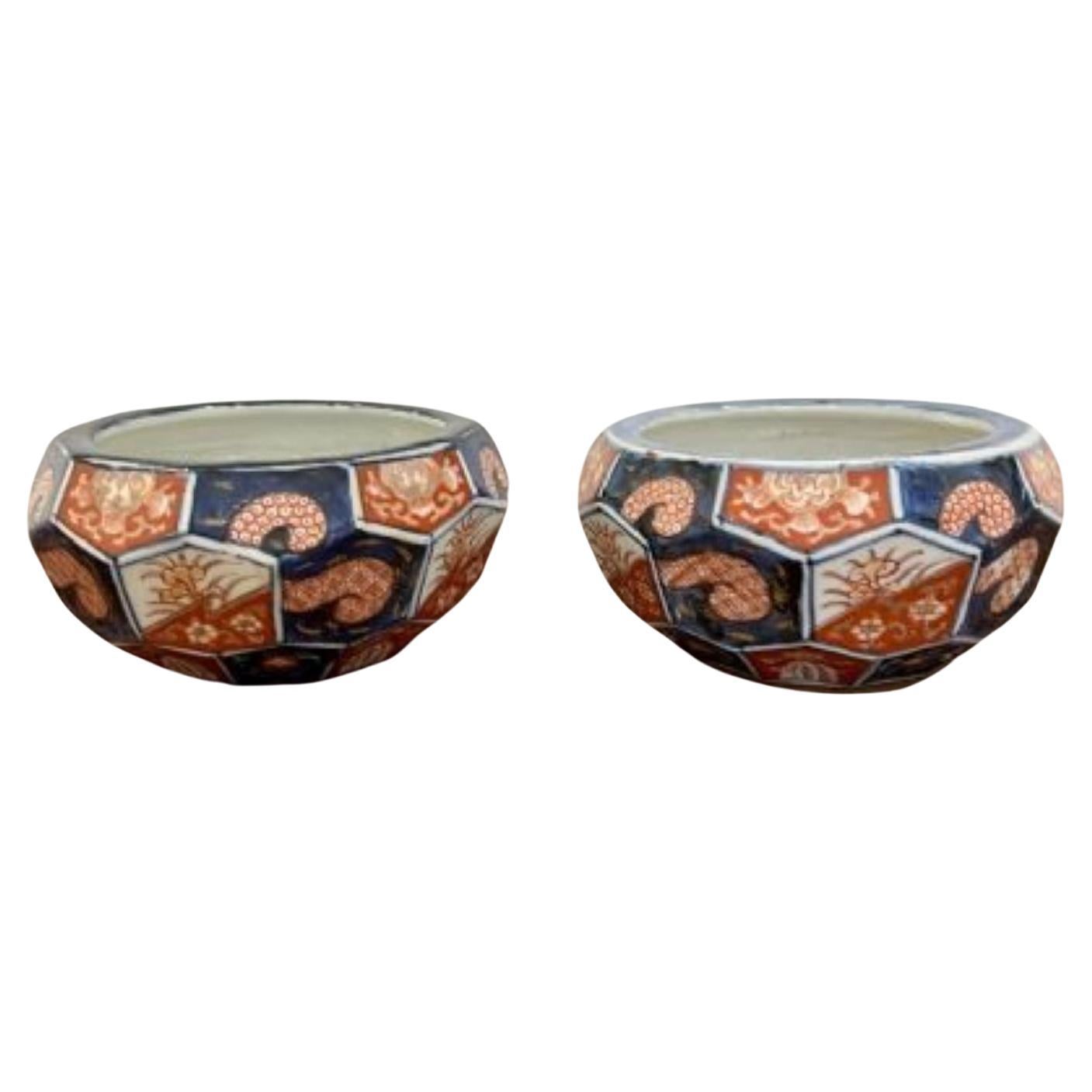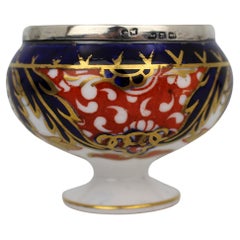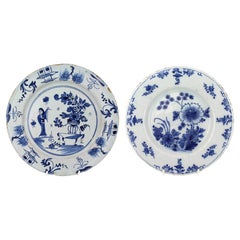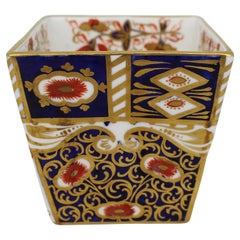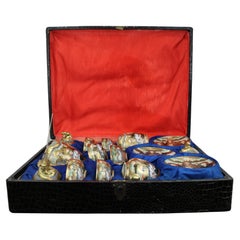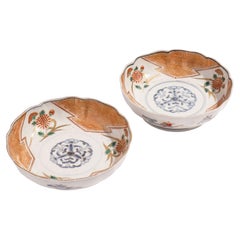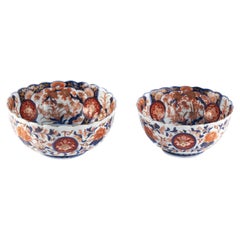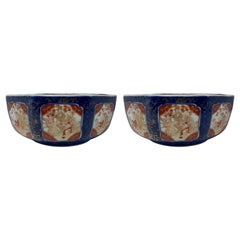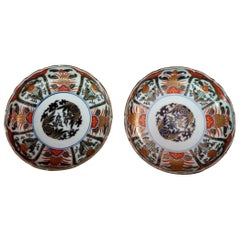Items Similar to Pair of Japanese Imari Porcelain Bowls, Meiji Period, circa 1900
Want more images or videos?
Request additional images or videos from the seller
1 of 5
Pair of Japanese Imari Porcelain Bowls, Meiji Period, circa 1900
$406.43
£295
€344.50
CA$562.73
A$614.36
CHF 322.09
MX$7,461.69
NOK 4,022.33
SEK 3,798.15
DKK 2,571.35
About the Item
Pair of Japanese Imari Porcelain Bowls, Meiji Period, circa 1900
A fine pair of Japanese Imari porcelain bowls dating to the Meiji period, circa 1900. Each of fluted circular form with scalloped rims, hand-painted in the traditional Imari palette of underglaze cobalt blue, iron red, green and gilt.
The decoration features alternating floral and geometric panels surrounding central roundels, all rendered with precision and delicacy. The larger bowl measures 18 cm in diameter, the smaller 16 cm. Both are unmarked to the base, in line with the period style.
In good antique condition, with minor wear to enamels and light surface marks commensurate with age.
Dimensions:
Height: approx. 7.5 cm / 6.5 cm
Diameter: 18 cm / 16 cm
Origin: Japan
Date: Circa 1900
Style: Meiji period Imari ware
- Dimensions:Height: 2.96 in (7.5 cm)Diameter: 7.09 in (18 cm)
- Materials and Techniques:
- Place of Origin:
- Period:
- Date of Manufacture:c.1900
- Condition:Wear consistent with age and use. In good antique condition, with minor wear to enamels and light surface marks commensurate with age.
- Seller Location:Worcester, GB
- Reference Number:1stDibs: LU5847245487922
About the Seller
5.0
Gold Seller
Premium sellers maintaining a 4.3+ rating and 24-hour response times
Established in 1971
1stDibs seller since 2021
24 sales on 1stDibs
Typical response time: 3 hours
- ShippingRetrieving quote...Shipping from: Worcester, United Kingdom
- Return Policy
Authenticity Guarantee
In the unlikely event there’s an issue with an item’s authenticity, contact us within 1 year for a full refund. DetailsMoney-Back Guarantee
If your item is not as described, is damaged in transit, or does not arrive, contact us within 7 days for a full refund. Details24-Hour Cancellation
You have a 24-hour grace period in which to reconsider your purchase, with no questions asked.Vetted Professional Sellers
Our world-class sellers must adhere to strict standards for service and quality, maintaining the integrity of our listings.Price-Match Guarantee
If you find that a seller listed the same item for a lower price elsewhere, we’ll match it.Trusted Global Delivery
Our best-in-class carrier network provides specialized shipping options worldwide, including custom delivery.More From This Seller
View AllFine Royal Crown Derby Imari Porcelain & Silver Salt, circa 1890
Located in Worcester, GB
Fine Royal Crown Derby Imari Porcelain & Silver Salt, circa 1890
A fine late Victorian Royal Crown Derby porcelain salt, beautifully decorated in the classic Imari palette of cobalt...
Category
Antique Late 19th Century British Porcelain
Materials
Porcelain
Pair of 18th Century Delft Plates – Chinoiserie & Floral Designs
Located in Worcester, GB
Pair of 18th Century Delft Plates – Chinoiserie & Floral Designs
Origin: Delft, Netherlands Period: 18th Century Material: Tin-glazed earthenware (Delftware)
Description:
This exc...
Category
Antique 18th Century Dutch Porcelain
Materials
Earthenware
Victorian Davenport Imari Porcelain Tapered Vase, England, circa 1880
Located in Worcester, GB
Victorian Davenport Imari Porcelain Tapered Vase, England, circa 1880
A fine quality late 19th century English porcelain vase by Davenport, Longport, ...
Category
Antique Late 19th Century British Porcelain
Materials
Porcelain
Cased Mid-20th Century Japanese Satsuma-style Moriage Dragonware Tea Set
Located in Worcester, GB
Mid-20th Century Japanese Satsuma-style Moriage Dragonware Tea Set with Arhats – Original Fitted Case
A finely decorated Japanese Satsuma-style tea...
Category
Mid-20th Century Japanese Tea Sets
Materials
Enamel
Davenport Imari Square Tapered Vase c.1880
Located in Worcester, GB
Davenport Imari Tapered Square Vase c.1880
A finely hand-painted square porcelain vase by Davenport, Longport, Staffordshire, dating to circa 1880. De...
Category
Antique Late 19th Century European Vases
Materials
Porcelain
$241 / item
Pair of Mid-20th Century Chinese Carved Rosewood Vase Stands
Located in Worcester, GB
A finely made pair of Chinese hardwood vase stands or plinths, dating to the mid-20th century, circa 1930–1950.
Each stand is of circular form with an inset display ring, raised on ...
Category
Mid-20th Century Chinese Planters, Cachepots and Jardinières
Materials
Hardwood
You May Also Like
Pair of Japanese Imari porcelain footed bowls, c. 1800's
Located in Kenilworth, IL
Pair of Japanese porcelain footed bowls in red, green, and blue, highlighted with gold decoration. The decoration centers on a cobalt under glaze central medallion the Imari taste. O...
Category
Antique Early 19th Century Chinese Decorative Bowls
Materials
Porcelain
Antique Near Pair of Japanese Imari Bowls
Located in Ipswich, GB
Antique near pair of Japanese Imari bowls having wonderful hand painted red, blue, orange, white and gold colours with floral, leaves and tree decoration. ...
Category
Early 20th Century Japanese Decorative Bowls
Materials
Ceramic
Pair Antique 19th Century Japanese Imari Porcelain Octagonal Bowls, Circa 1890
Located in New Orleans, LA
Pair antique 19th century Japanese Imari porcelain octagonal bowls, Circa 1890.
Category
Antique 19th Century Japanese Porcelain
Materials
Porcelain
Pair of Japanese Imari Plates, 19th Century, RIc 055
Located in Norton, MA
A Pair of Japanese Imari Plates from the Maji period of the 19th Century with different gilt floral designs in 8 different patterns surrounding the entire plater and a painting of my...
Category
Antique 19th Century Decorative Dishes and Vide-Poche
Materials
Porcelain
Pair of Antique Kangxi Chinese Porcelain Imari Bowls Porcelain, 18th Century
Located in Amsterdam, Noord Holland
Nice Pair of Kangxi Bowls
Additional information:
Material: Porcelain & Pottery
Region of Origin: China
Emperor: Kangxi (1661-1722)
Period: 18th century
Decoration Type / Colour: Im...
Category
Antique 18th Century Chinese Qing Serving Bowls
Materials
Porcelain
$638 Sale Price / set
20% Off
Unusual pair of antique Japanese quality Imari bowls
Located in Ipswich, GB
Unusual pair of antique Japanese quality Imari bowls having a quality pair of unusual antique Japanese quality Imari hexagon shaped bowls with red, blue an...
Category
Early 20th Century Decorative Bowls
Materials
Ceramic
More Ways To Browse
Chinese Silver Tankard
Derby Botanical Porcelain
Derby Botanical
Elite Limoges France
Fruit Cooler Pair
German Fish Plates
Hard Paste Meissen Porcelain
Herend Antique
Japanese Art Deco Porcelain
Kpm Porcelain Flowers
Large Porcelain Bowls
Limoges Hand Painted Fish Plates
Limoges White And Gold
Meissen Art Deco
Meissen Cabinet
Meissen Indian Pink
Meissen Painted Plaque
Meissen Porcelain Sugar
